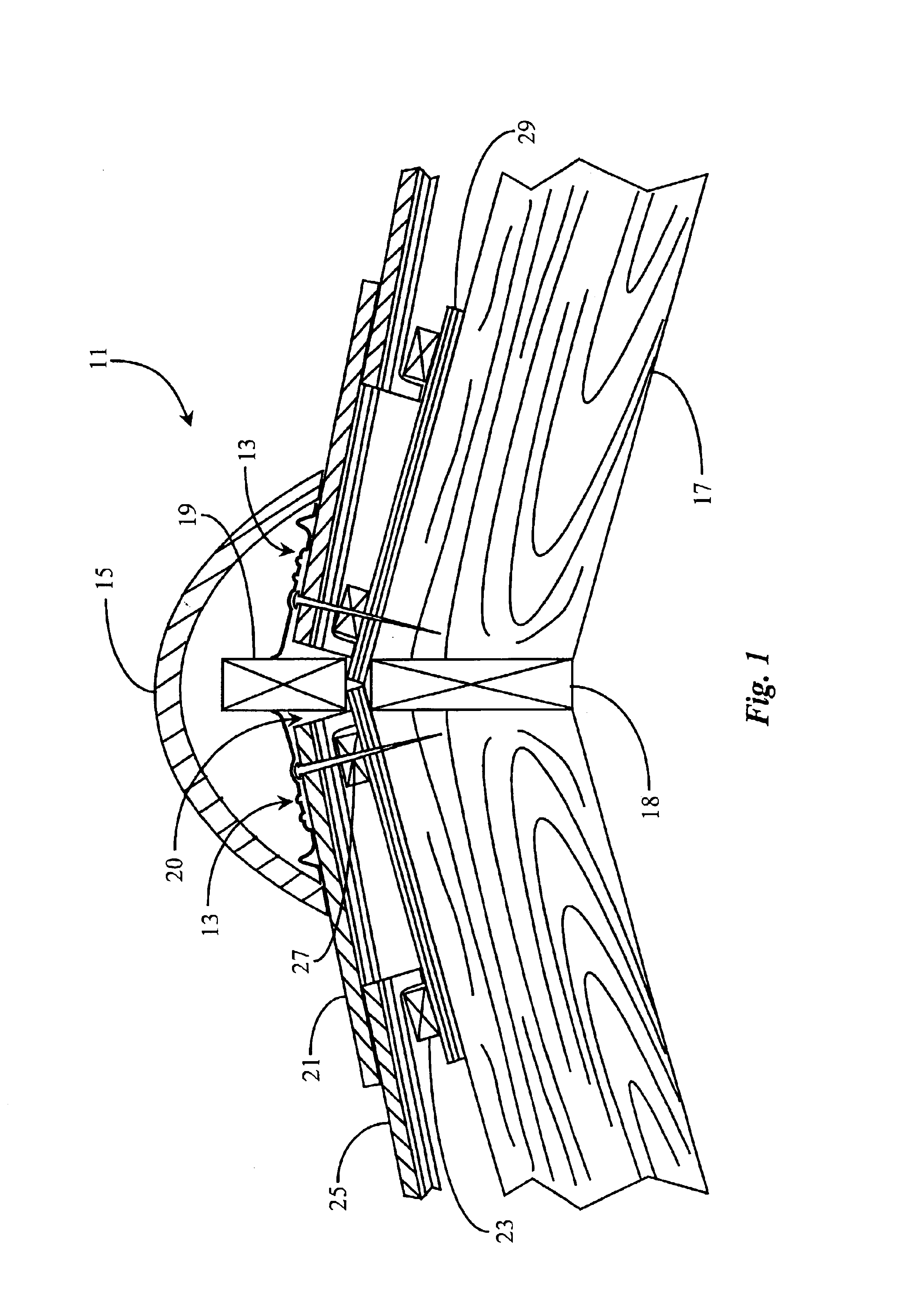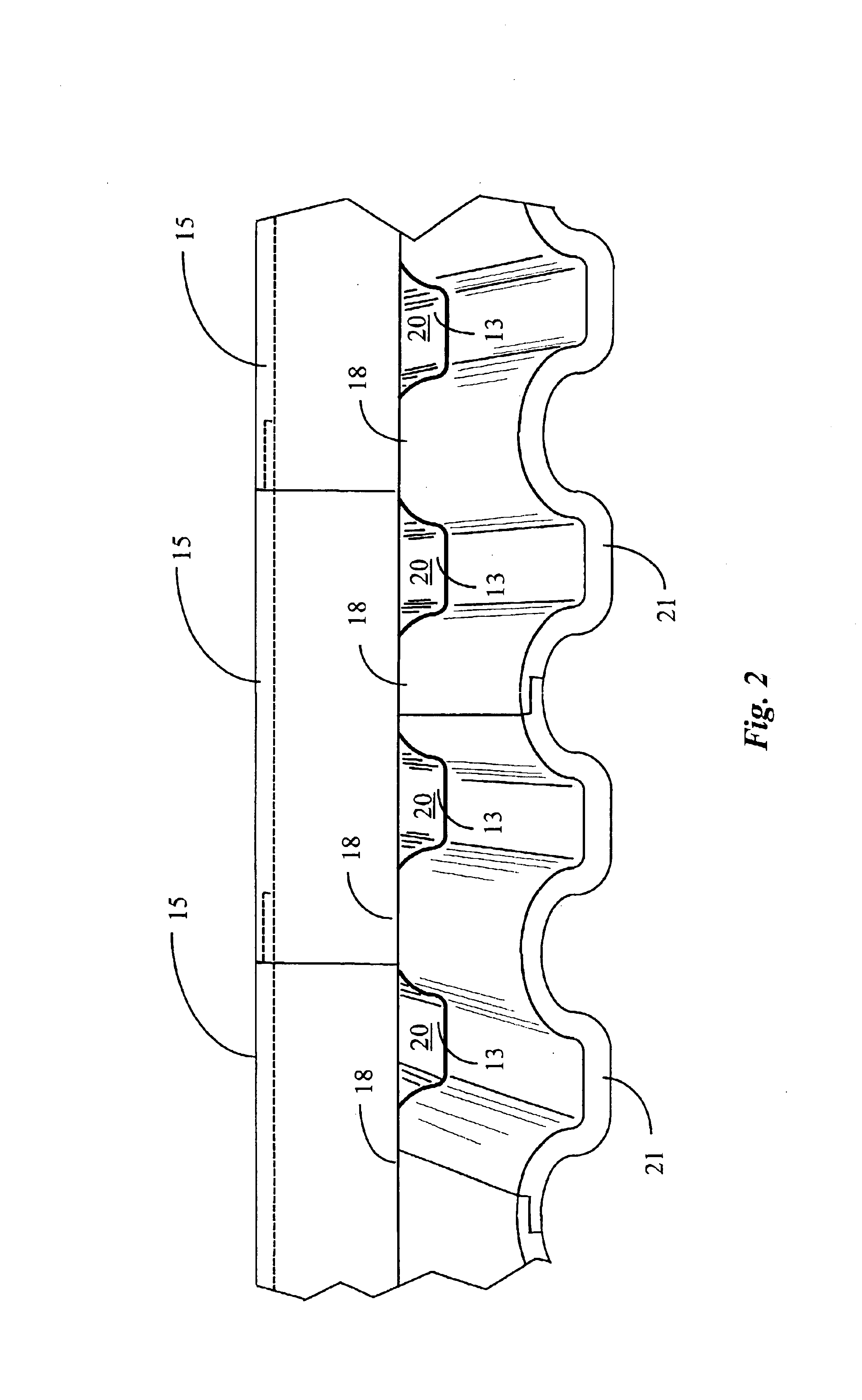Multi-pitch improved ridge-seal for tiled roofs
a tiled roof and multi-pitch technology, applied in the field of roof construction, can solve the problems of uneven roof pitch, inconvenient installation of tiled roofs, and inability to meet the needs of different roof types,
- Summary
- Abstract
- Description
- Claims
- Application Information
AI Technical Summary
Benefits of technology
Problems solved by technology
Method used
Image
Examples
Embodiment Construction
FIG. 1 is a cross-sectional view of a ridge area 11 of a tiled roof illustrating installed ridge-seals 13 according to an embodiment of the present invention. Roof area 11 is typical of a tiled-roof ridge. Wooden roof beams 17 are joined at the ridge at an angle by way of ridge beam 18. This forms an underlying roof-structure having a particular pitch that may vary considerably from roof to roof.
Wooden panels 29, typically plywood, are laid over beams 17 and nailed in place to form a support surface for accepting a tile roof. Wooden cross-members 23, sometimes termed bats, are then strategically located and nailed to panels 29 to form a series of retainers over which tiles may be laid to form the tile roof. In some cases the plywood panels are not installed and the bats are nailed directly to the roof beams. Tiles 25 are hung adjacent to one another beginning at the lower edges of each roof area and overlapped in a series of rows with cross-members 23 supporting and guiding the loca...
PUM
 Login to View More
Login to View More Abstract
Description
Claims
Application Information
 Login to View More
Login to View More - R&D
- Intellectual Property
- Life Sciences
- Materials
- Tech Scout
- Unparalleled Data Quality
- Higher Quality Content
- 60% Fewer Hallucinations
Browse by: Latest US Patents, China's latest patents, Technical Efficacy Thesaurus, Application Domain, Technology Topic, Popular Technical Reports.
© 2025 PatSnap. All rights reserved.Legal|Privacy policy|Modern Slavery Act Transparency Statement|Sitemap|About US| Contact US: help@patsnap.com



